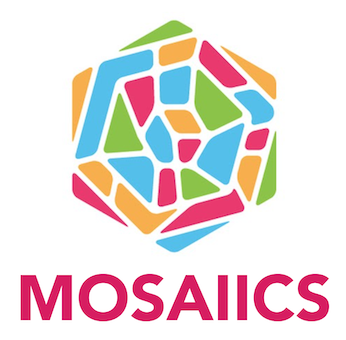Radio interferometric observations are quite difficult, especially at the lowest frequencies observable from the ground. During the night, observing targets are usually steady in emission, and there is little ionospheric interference. During the day the situation is quite different. Quiet-time solar observations at low frequencies reveal a wealth of structures, previously unexplored. Interferometric imaging reveals active regions, coronal holes, and streamers, as well as peculiar regions of very high or very low intensity. Much of this emission, especially in the extended corona, is relatively faint and requires better coverage of the UV plane, respectively longer observations with multiple baselines.
Unfortunately, the effect of the ionosphere is very pronounced during the day, which causes smearing in the interferometric imaging, and precludes the simple averaging of multi-hour observations. That is why we have developed a method for lucky imaging of LOFAR observations based on a Machine Learning technique. The method is similar to a technique applied in optical observations, in order to improve the quality of data and achieve even better sensitivity. Briefly, the method consists of a number of steps: 1) LOFAR data are calibrated (visibility phases and amplitudes) using the standard LOFAR software DP3. 2) We use an ML technique, K-Means clustering, to cluster the visibility amplitudes for each observing interval of duration 0.25 seconds in a solar measurement set. Extremely high visibility magnitudes are taken as a sign of corrupted observations due to ionospheric interference. 3) The clustering provides self-consistently the limiting value of the visibility magnitude for each observing interval/timestep. Only the baseline points within the cluster with the lowest mean value are kept, and all other baseline points are flagged not to use. This is done sequentially for all intervals (57520 in our test dataset). 4. Interferometric imaging (CLEANing) is performed on the flagged data, and the result is compared with the pre-flagging version.
We have found a visible improvement of the appearance of the solar signal, especially the spatial resolution due to reduced smearing of the signal. Figure 14 shows the result of applying the technique we developed to a LOFAR interferometric observing at 50 MHz for observations on 2017/08/04. The result clearly shows the improvement in the angular resolution and sensitivity of the telescope when observing coronal features. Using this technique will help the study of quiet-time radio Sun, but it will also help improve the automated feature detection and tracking, which we will apply to solar radio images.
A comparison of the original (left column) and enhanced (right column) images of the quiet-Sun, obtained from two hours of uninterrupted observations with the LOFAR telescope at 50 MHz. The upper and lower rows represent two hour-long integrations of the data.
